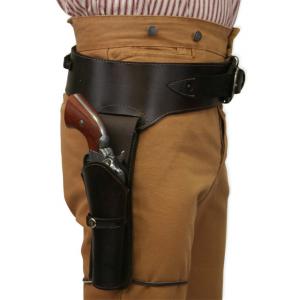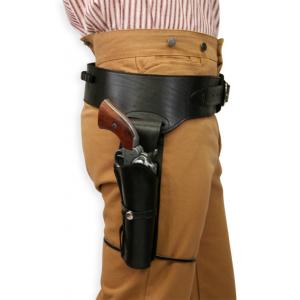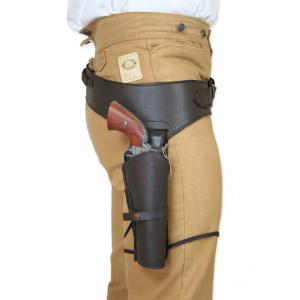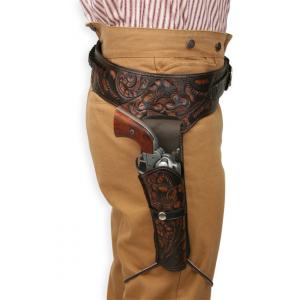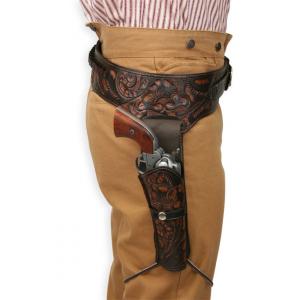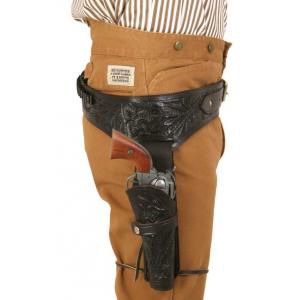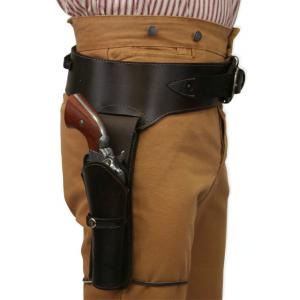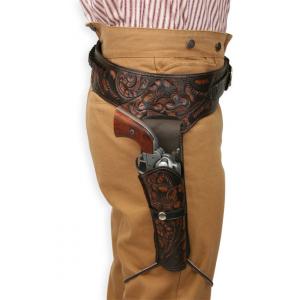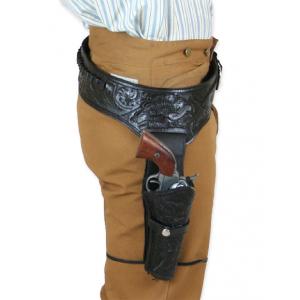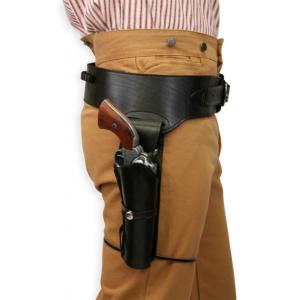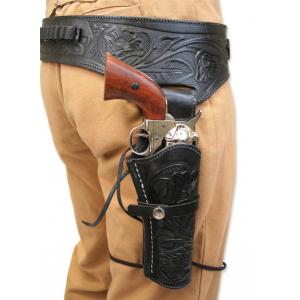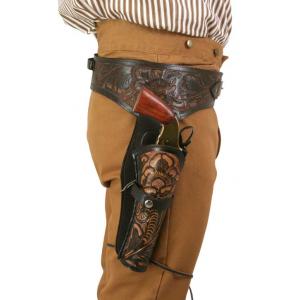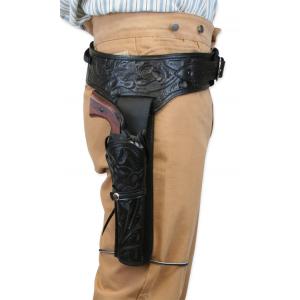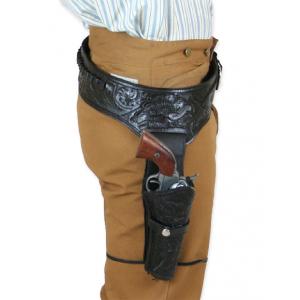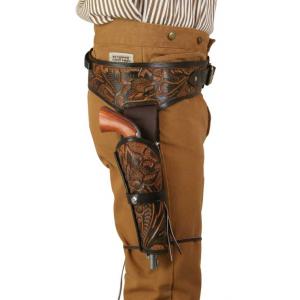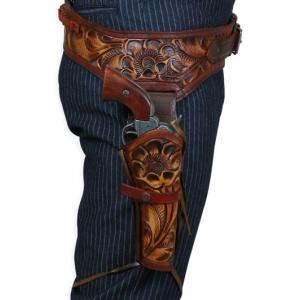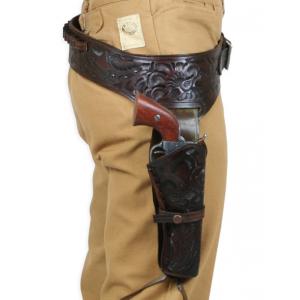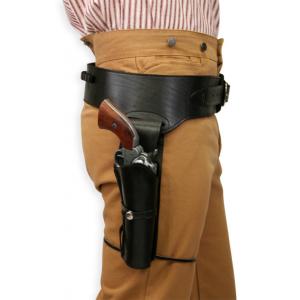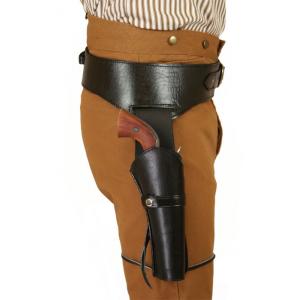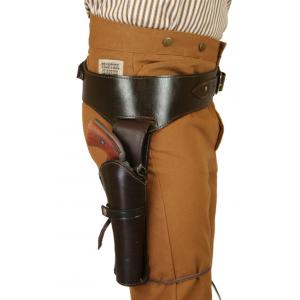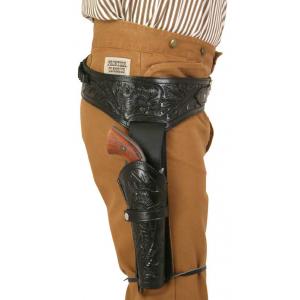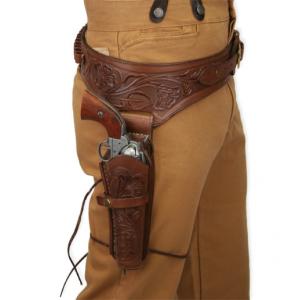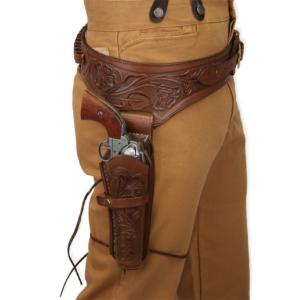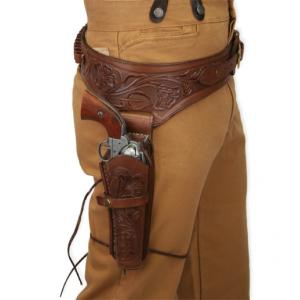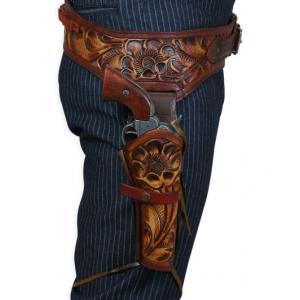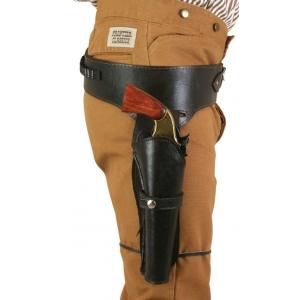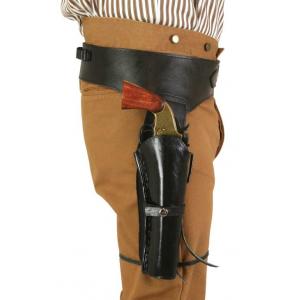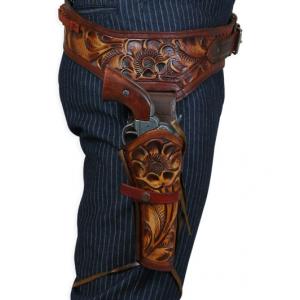Prices and Availability Subject to Change. Please call 800-997-4311 for more Information.
29 results
Q&A About Old West Cowboy Holsters
What were the primary functions of Old West leather holsters?
The primary functions of Old West leather holsters were to protect firearms from the elements, provide secure carrying during horseback riding and daily activities, and enable relatively quick access when needed. Unlike movie portrayals focused on fast draws, historical holsters were designed more for practical protection, comfort during long rides, and preventing the gun from falling out while working or traveling across rough terrain.
What was a cross-draw holster?
A cross-draw holster was positioned on the opposite side of the body from the shooting hand, with the gun butt facing forward for a "cross-body" draw. This configuration was particularly popular among horsemen, stagecoach drivers, and those who spent long periods seated, as it allowed easier access to the firearm while mounted or sitting, prevented the gun from digging into the hip while riding, and reduced the risk of the revolver catching on the saddle when mounting or dismounting.
Were there different ways to secure holsters to the belt?
Yes, there were several ways to secure holsters to belts in the Old West, including: holsters with belt loops that the main belt threaded through; holsters stitched directly onto the gunbelt; "Mexican loop" designs featuring one or more leather strips forming loops behind the holster; detachable holsters with large clips that hooked over the belt; and military-style flap holsters with belt slots. The method varied based on the intended use, region, and personal preference.
MORE Q&A







